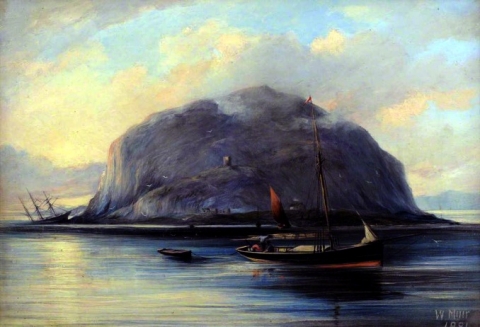Plans submitted to extract granite from Scotland's Ailsa Craig

Ailsa Craig (Scottish Gaelic: Creag Ealasaid or Aillse Creag) rises out of the seas of the outer Firth of Clyde to a height of 1,109 ft (338 m). It lies nine miles offshore from the coast of South Ayrshire (Scottish Gaelic: Siorrachd Inbhir Àir a Deas) in the west of Scotland. Ailsa Craig geologically is all that remains of a volcanic plug from an extinct volcano and is 2.5 miles (4 km) in circumference.
Ailsa Craig, which is uninhabited, is designated as a Site of Special Scientific Interest and Special Protection Area because it supports 73,000 breeding seabirds and is now a bird sanctuary, leased by the Royal Society for the Protection of Birds (RSPB) until 2050. Now plans have been submitted by a winter sports firm for planning permission to take about 30,000 tonnes of granite from Ailsa Craig. Kays Curling wants to start extracting the rock in October or November to make curling stones.
Curling is a sport that has its origins in Scotland, in which players slide stones on a sheet of ice toward a target area which is segmented into four concentric circles. Kays Curling wants to extract 25,500 tonnes of common green granite from the south of Ailsa Craig and 5,100 tonnes of Blue Hone granite from the northern part of the island. The company last harvested granite in 2013 and 2002 and has provided curling stones for the last five Olympic winter games. The type of granite is considered as the best in the world for curling stones and is only found on Ailsa Craig.
If the application is successful the company has said that the work would be timed to avoid the bird breeding season. An ornithologist would also monitor activity to ensure it doesn’t cause harm to the birds.
Image: Ailsa Craig with Clan Campbell Ashore painted by William Muir in 1881.





